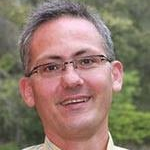Soil Moisture Retrieval using Radar Remote Sensing Sensors
A special issue of Remote Sensing (ISSN 2072-4292). This special issue belongs to the section "Remote Sensing in Geology, Geomorphology and Hydrology".
Deadline for manuscript submissions: closed (31 December 2019) | Viewed by 69112
Special Issue Editors
Interests: airborne instrumentation for land surfaces; microwave remote sensing; GNSS-R; GNSS; land surfaces; spatial hydrology
Special Issues, Collections and Topics in MDPI journals
Interests: environmental science; irrigation and water management; soil science; microwave remote sensing; lidar
Special Issues, Collections and Topics in MDPI journals
Interests: land surface modelling; climate change; hydrology; data analysis
Special Issues, Collections and Topics in MDPI journals
Special Issue Information
Dear Colleagues,
Soil moisture plays an essential role in the understanding of the continental water cycle. It is a key parameter in the separation of precipitation water between infiltration, runoff and evapotranspiration processes and in water management. In this context, active microwave remote sensing has shown a high potential to retrieve surface soil moisture through the use of SAR and other radar sensors (scatterometer, altimeter, GNSS-R, etc.). In the last few years, with the arrival of new sensors with important capacities in terms of spatial and temporal resolutions, it becomes possible to propose operational soil moisture products and to assimilate this parameter in water process modeling. This Special Issue has as principal objective to present the principal algorithms and methodologies around the use of active sensors (Sentinel1, Alos-2, TERRASAR-X, RADARSAT, ASCAT, CYGNSS, etc.) in the estimation and use of soil moisture. Different topics are considered:
- Signal physics of radar measurement and backscattering modeling over soil surfaces
- Inversion algorithms to estimate soil moisture
- Roughness and vegetation effects of radar signal
- Synergy between radar and other sensors for soil moisture retrieval
- Assimilation of soil moisture products in process models
Dr. Mehrez Zribi
Dr. Nicolas Baghdadi
Dr. Clément Albergel
Guest Editors
Manuscript Submission Information
Manuscripts should be submitted online at www.mdpi.com by registering and logging in to this website. Once you are registered, click here to go to the submission form. Manuscripts can be submitted until the deadline. All submissions that pass pre-check are peer-reviewed. Accepted papers will be published continuously in the journal (as soon as accepted) and will be listed together on the special issue website. Research articles, review articles as well as short communications are invited. For planned papers, a title and short abstract (about 100 words) can be sent to the Editorial Office for announcement on this website.
Submitted manuscripts should not have been published previously, nor be under consideration for publication elsewhere (except conference proceedings papers). All manuscripts are thoroughly refereed through a single-blind peer-review process. A guide for authors and other relevant information for submission of manuscripts is available on the Instructions for Authors page. Remote Sensing is an international peer-reviewed open access semimonthly journal published by MDPI.
Please visit the Instructions for Authors page before submitting a manuscript. The Article Processing Charge (APC) for publication in this open access journal is 2700 CHF (Swiss Francs). Submitted papers should be well formatted and use good English. Authors may use MDPI's English editing service prior to publication or during author revisions.
Keywords
- Soil moisture
- Radar
- Scattering modeling
- Assimilation
- Agriculture applications
- Hydrology applications







